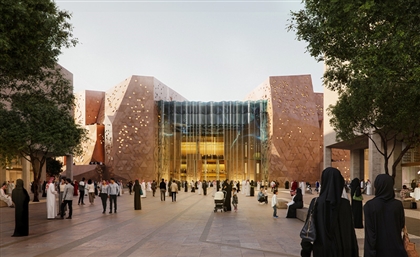Dahab Island Palace: An Emblem of Mamluk Egypt
Built by a descendant of the Mamluks, the palace transports its visitors 600 years into the past.
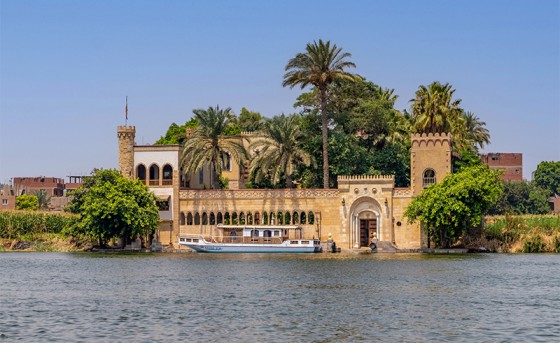
Hidden in plain sight, just across Maadi’s Nile Corniche, Dahab Island Palace was built by Prince Naguib Hassan, a descendant of the Mamluks who ruled Egypt for around 300 years. Offering pockets of serenity completely immersed in past aesthetics, the palace was built on the shores of Dahab Island as an ode to the traditional craftsmanship of Mamluk palatial architecture.
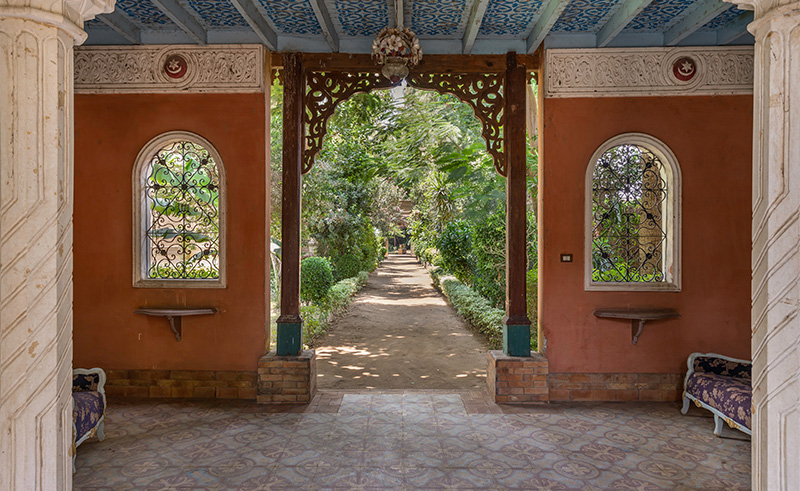 Born in Giza, Prince Hassan moved to Switzerland in the 1960s where he grew up hearing tales of what Egypt once was by Egyptian aristocrats. Ignited by an unquenchable sense of nostalgia, he moved back in the 1980s and settled in Zamalek, the epicentre of Cairene art.
Born in Giza, Prince Hassan moved to Switzerland in the 1960s where he grew up hearing tales of what Egypt once was by Egyptian aristocrats. Ignited by an unquenchable sense of nostalgia, he moved back in the 1980s and settled in Zamalek, the epicentre of Cairene art.
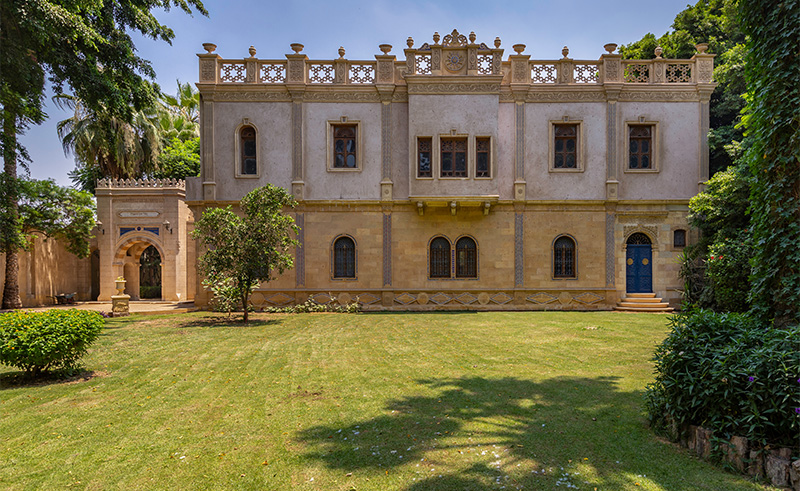 Keen on giving physical form to the past, Prince Hassan’s approach to the palace was grounded in his roots, presenting his vision to ‘Haj Moustafa Hassan’, a disciple of Hassan Fathy’s pioneering architecture who spent his entire life working in archeology, heritage restorations and taught Islamic art at Aga Khan Foundation.
Keen on giving physical form to the past, Prince Hassan’s approach to the palace was grounded in his roots, presenting his vision to ‘Haj Moustafa Hassan’, a disciple of Hassan Fathy’s pioneering architecture who spent his entire life working in archeology, heritage restorations and taught Islamic art at Aga Khan Foundation.
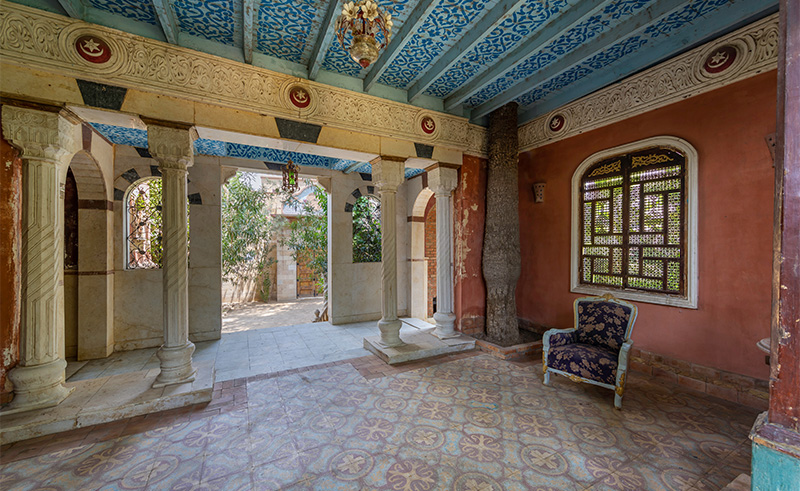 Over 25 years, reclaimed wood, marble columns and balconies which once marked demolished buildings were used to create magical spaces informed by Islamic architecture. This allowed the palace to not only tell the tale of the prince’s family history but also the many stories they once played backdrops to, adding layers to the palace’s character.
Over 25 years, reclaimed wood, marble columns and balconies which once marked demolished buildings were used to create magical spaces informed by Islamic architecture. This allowed the palace to not only tell the tale of the prince’s family history but also the many stories they once played backdrops to, adding layers to the palace’s character.
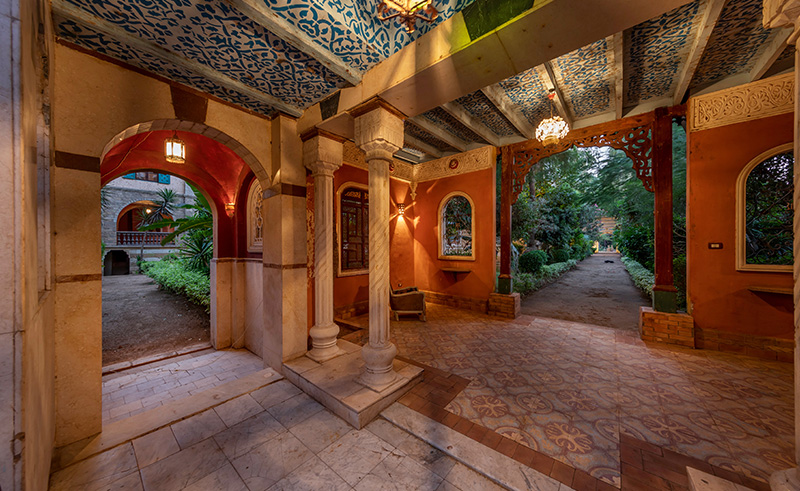 Upon entry, reclaimed wooden doors and marvellous marble columns guide visitors through Mamluk foyers, before leading them into the courtyard, a signature of Islamic architecture. Inside Prince Hassan’s residence, the family’s emblem is carved in stone along with Islamic sayings after the likeness of Mamluks. What was once a farmhouse is now an interior that acts as a mini museum filled with relics from the past, from rare books documenting a distant period of Egyptian history and daggers used in the Citadel Massacre to glasses that were gifted at the opening of the Suez canal.
Upon entry, reclaimed wooden doors and marvellous marble columns guide visitors through Mamluk foyers, before leading them into the courtyard, a signature of Islamic architecture. Inside Prince Hassan’s residence, the family’s emblem is carved in stone along with Islamic sayings after the likeness of Mamluks. What was once a farmhouse is now an interior that acts as a mini museum filled with relics from the past, from rare books documenting a distant period of Egyptian history and daggers used in the Citadel Massacre to glasses that were gifted at the opening of the Suez canal.
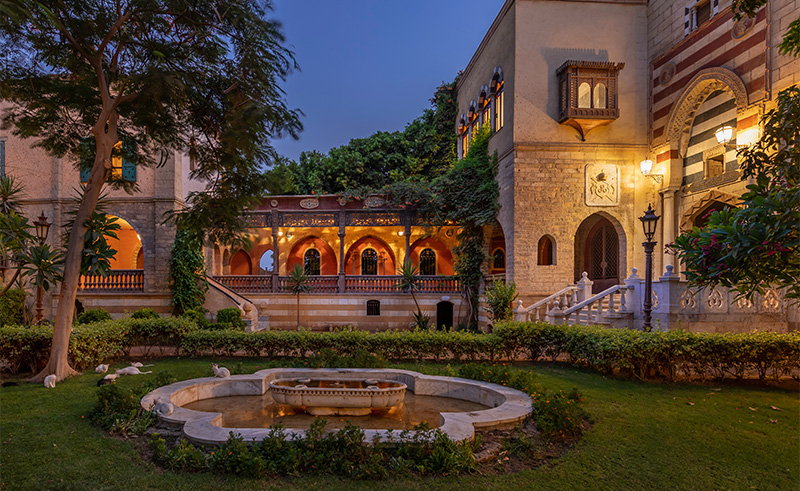 The palace has eight entrances, paying homage to the surroundings like ‘Port du Nil’ which faces the Nile, and those who played a major role in building and maintaining the estate, such as the ‘door of Mustafa (the builder)’ and the ‘door of Jaafar (the estate manager)’.
The palace has eight entrances, paying homage to the surroundings like ‘Port du Nil’ which faces the Nile, and those who played a major role in building and maintaining the estate, such as the ‘door of Mustafa (the builder)’ and the ‘door of Jaafar (the estate manager)’.
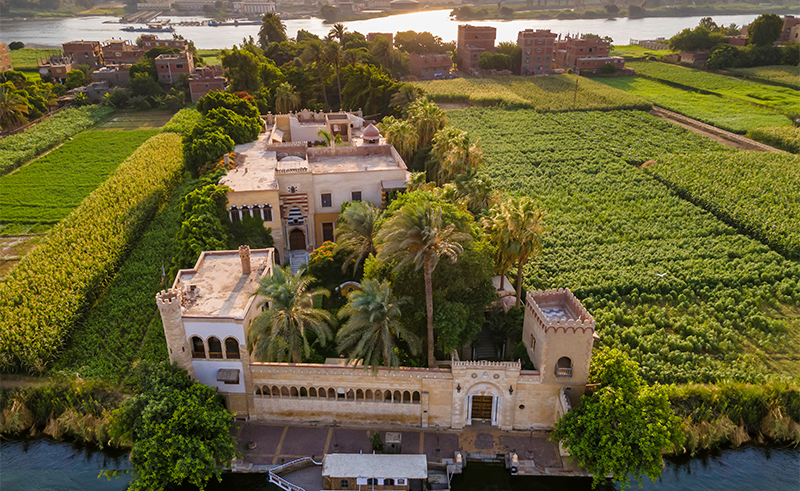 The palace is open to the public, which means that while you’re on a felucca in the Nile, you can make a stop and stroll through its alluring arcades which has served as the venue of choice for weddings, dinners and movie sets. The estate also plays an environmental role, hosting awareness events and participating with the municipality in handling waste that otherwise would end up slowly poisoning the Nile.
The palace is open to the public, which means that while you’re on a felucca in the Nile, you can make a stop and stroll through its alluring arcades which has served as the venue of choice for weddings, dinners and movie sets. The estate also plays an environmental role, hosting awareness events and participating with the municipality in handling waste that otherwise would end up slowly poisoning the Nile.
Image Credit: Essam Arafa
- Previous Article سندباد الورد أضحي سلطاناً: مراجعة لألبوم شب جديد والناظر 'سلطان'
- Next Article AirCairo Temporarily Suspends Flights to Tel Aviv
Trending This Week
-
May 01, 2024






